How much information about a mountaineering garment can we get from the data provided about the fabric? 30D 190T 3000HH... sometimes the figures are too confusing if you don't have a basic understanding of what each concept means. In this article, we’ll talk about the general data found on most outdoor clothing or equipment.

The manufacture of outdoor clothing involves technical terminology. Photo: Patagonia
Sometimes, when talking to customers about the materials used for outdoor gear, we tend to use terminology that is of common use in this sector and is therefore used as everyday language. We are aware, however, that for anyone unaccustomed to this jargon it can be quite confusing if it is not explained carefully.
These terms arise from the need to differentiate the quality and properties of materials. When browsing the different options of a down jacket, for example, it can be hard to understand how the difference in price is justified, if it ranges from 100€ to 1000€. It is usually the case that these technical terms that will explain the differences in price between the different models.
In addition to concepts such as the ethical origin of the material and the working conditions of the employees, which we have already discussed in the article on Outdoor Equipment and Sustainability, the differences in quality are explained with terms such as cuin, which tell us about the insulation capacity, or denier, which gives an idea of how light and strong a fabric is.
Many of these topics have already been covered in previous articles and links to these are provided. The following is a compilation and review of the main concepts that can be found in textiles and footwear:
Cuin
Short definition:
Volume occupied by one ounce of unpressurised feather down, measured in cubic inches.
Long explanation of cuin:
This term is used for outdoor gear filled with down, usually jackets and sleeping bags. It is also used in one-piece expedition suits and other garments such as vests or booties.
The quality of thermal insulation in a garment is determined by its ability to retain the air heated by the body. Normally, very dense and heavy garments such as leather are quite warm, but become impractical in the mountains because of the poor breathability, compressibility and weight. For this reason, we choose one of the lightest materials available: feather down, usually goose and also, but to a lesser extent, duck.
Down, also known as duvet, is a feather without a rachis (calamus or central shaft) which is found in the chest and neck of birds. Due to its three-dimensional structure, down occupies a large volume with little weight, retaining a lot of air in its structure. Since it has no rachis, it also has no ability to escape through the outer fabric. All these explanations are detailed in our article comparing down and synthetic insulated clothing.
There is usually a combination of small feathers (with rachis) and down (without rachis) and the quality of a garment would often be defined, in the past, by the percentage of down and feather, for example, 80/20, 90/10 or 92/8 were common values for quality garments. Today this definition is surpassed by the fill power expressed in quintals.

Parka Summit L6 AMK by The North Face. The highest fill power on the market, at 1000 cuin
As we said, the cuin (cubic inches) is the unit of measurement of the fill power or swelling capacity of an ounce (29 grams, the weight of a AA battery) of down. The use of imperial units has its explanation in the power and influence of the American industry in the textile world. The equivalence in the metric system or international system of units for the most common fill power (FP) is as follows:
- FP600 cuin: 29 grams of down fills almost 10 litres capacity.
- FP700 cuin: 29 grams of down fills almost 11.5 litres capacity.
- FP800 cuin: 29 grams of down fills slightly over 13 litres capacity.
- FP900 cuin: 29 grams of down fills slightly over 14.5 litres capacity.
To summarize, the higher the fill power or more cuin per garment, the higher the quality of the down and the greater the down's ability to inflate and perform by retaining body heat.
CLO Value
Short definition: a unit of thermal insulation in a garment that is able to maintain a stable body temperature of a person at rest at 21°C ambient temperature in the shade with a relative humidity of 50%, for 8 hours.
Long explanation of CLO Value:
Although the CLO value (from clothing) was created in 1941, in recent years it is gradually beginning to appear in mountain equipment specifications mainly to indicate the insulation capacity of garments filled with synthetic insulation. It would be the equivalent of the cuin in down garments.
Synthetic insulation usually consists of polyester fibres and unlike down, which has to be compartmentalized in baffles to keep it evenly distributed, synthetic insulation has a stable structure that allows it to retain its shape but does not have the expansion capacity of down.
The exact definition is 1 CLO = 0.155 m² x K / W, i.e. it takes into account the material surface, the temperature (in Kelvin degrees) and the energy transfer (in watts). Basically, this means that the higher the clo, the better the insulation, value 0 being that of a naked person, clo value 1 an executive suit and clo value equivalent to 4 that of a full expedition suit.
This definition of clo is insufficient when what we want to know how much a garment insulates when worn by someone exercising. Synthetic insulation brands usually use another measurement based on clo, but in which the weight per surface area is also added as a variable to indicate the capacity, which can be GSM (g/m²) or OYS (oz/y²) depending on whether the units of the international (grams per square meter) or imperial (ounces per square yard) system are used. As with the clo value, the higher the clo/g/m² or clo/oz/y² value, the greater the capacity of the synthetic padding to insulate against the cold.

Cirrus Flex 2.0 Hoody by Rab with Primaloft Silver Luxe 0.90 clo/oz/y² insulation.
The equivalence in clo/oz/y² and cuin values is not standardized, although it is commonly accepted that the ratio increases by approximately 0.2 clo/oz/yd² for every 50 cuin of fill power:
- 550 cuin = 0’7 clo/oz/yd²
- 600 cuin = 0’9 clo/oz/yd²
- 650 cuin = 1’1 clo/oz/yd²
- 700 cuin = 1’3 clo/oz/yd²
R-Value
Short definition: insulating capacity of a material or a two-dimensional structure.
Long explanation of R-value:
For some years now, it has been quite common to see the R-value on sleeping mats and bags for mountain use. Since the differences in insulation material and structure can make a significant change in our well-being when sleeping, manufacturers have decided to indicate this value to give an idea, or at least a comparison between models of the level of insulation each model provides. Take a look at the article on sleeping mats and insulation for sleeping in the mountains where you will see all the features and important concepts on this subject.
The complete formula that measures the resistance (hence R-value) to thermal loss includes variables of temperature, surface area and heat flow through the insulation. From this formula we obtain a result which is the R-value and which indicates that the higher this value is, the better it insulates against cold surfaces.

NeoAir Xtherm insulation by Therm-A-Rest. R-value 6,9 at 430 grams.
Normally, the R-value will basically depend on two variables of the mat: material and thickness. On the one hand, it is essential that the material is a poor thermal conductor. Polyethylene is used in foam mats and polyester or nylon in inflatable mats with some type of aluminated interior to retain body heat by radiation; on the other hand, the greater the thickness of the material, the better the insulation capacity.
The enemy of the R-value in insulation used for mountain equipment is weight. While weight of the insulating material is not very important in most situations, it is very important in the mountains, where you have to carry all your gear with you, so the best possible weight/insulation ratio is very important.
The difference in R-values range from 1.5 for a very discrete, simple, thin mat to close to 7 for thick air beds, which are still much lighter than those used for general use.
Denier
Short definition: grams of weight per 9,000 meters of fibre.
Long Explanation of Denier
Although the concept of denier is quite common in mountaineering gear and is correctly interpreted as the thickness of a fabric, we have just seen in the short definition that it has quite a specific technical explanation. Basically, thicker yarns make thicker and more resistant fabrics and thinner yarns do the opposite.
Although there is an international unit that also measures the linear density of a fabric and that is very similar to the denier, this will sound less familiar to the mountaineering community. This is the decitex (grams of weight per 10000 meters of fiber) and the truth is that it is rarely used in the mountain textile industry.
So, if the weight of 9000 meters of a given fiber is 10 grams, it is said to be a 10 denier fabric, which is extremely fine, as you might guess. Similarly, a 600 denier fabric (expressed 600D) tells us that 9000 meters of yarn of this fiber weighs 600 grams. The 10D is used for lining ultralight garments, while the 600D is for backpacks or garment reinforcements.

Rab Zero G. Fine and compressible 7 denier fabric.
So far it is clear that the denier tells us about the thickness of a fiber, but durability also needs to be taken into account, as the denier alone does not inform on the durability of the fabric, so we need to know the material it is made of and the number of threads to reach a conclusion. For example, untreated 300D nylon (or polyamide) is more durable than untreated 300D polyester.
Thread Count
Short definition: number of warp and weft threads in one square inch (6.45cm2) of fabric.
Long Explanation of Thread Count:
We have seen that the term denier, in its broadest sense, refers to the thickness of a fabric, however that does not convey much information if we do not know the yarn density.
The Thread Count is abbreviated as T and expresses the density of yarn of the fabric and, therefore, provides information about its resistance to abrasion or breathability. It usually accompanies the denier data of the fabric and, although it is still not widely used, brands are beginning to incorporate this concept into the technical specifications of products such as textile reinforcements for tents or backpacks.

CAMP Minima 2 SL tent. 70D 190T Nylon groundsheet.
Fabrics are made up of two types of yarn, the warp yarns that are placed lengthwise during manufacture, and the weft yarns that pass alternately under and over the warp yarns to form the fabric. The Thread Count takes into account the warp and weft threads in its count, so if we are told that a fabric is 210T polyester it means that, between warp and weft threads, one square inch has 210 polyester threads.
GSM (g/m2)
Short definition: grams per square meter of a material.
Long Explanation of GSM (g/m2):
So far we have seen how denier or Thread Count applies to fabric thicknesses and densities, but what happens when we have to express those concepts in a non-woven material? Synthetic fills in warm garments are usually made up of a blend of fibres that capture body heat, but are made without the traditional loom process with warp and weft yarns
These fibres can be of different thicknesses and lengths and do not follow a uniform pattern, but intertwine in an apparent chaos that allows the air heated by the body to remain as long as possible between these fibres. Something similar happens with polymer foams which also do not have a particular thickness or thread count.
In order to express the quantity, density and weight of a material, whether woven or non-woven, a term is used which, this time, is expressed in international system units: weight per surface area, grams per square meter. The way manufacturers use to express it is the usual g/m² or GSM (grams per square meter) although, it is also possible to find the concept oz/y² (ounce per yard squared).
As with other systems such as denier or Thread Count, the GSM alone does not indicate the quality of a product if we do not know what the fabric is made of, so it is essential to first know the type of fabric and then its density. A higher GSM will indicate greater density and, therefore, higher weight.
HH or Hydrostatic Head
Short definition: hydrostatic pressure that a fabric is able to withstand before losing waterproofing capacity, expressed in millimetres.
Long explanation of HH:
One of the most well-known concepts by mountaineers for many years is the Hydrostatic Head (hydrostatic pressure or load), so it is common to find the initials HH before a figure expressed in millimetres.
The test to know the waterproofing capacity of a fabric is fully explained in the article on waterproof garments. The summary of the waterproofing test is that a bottomless tube, filled with water, is placed over a piece of tight fabric. As the tube is filled with water, the pressure exerted on the fabric increases until it reaches a point where it passes through; the height reached by the water in the tube is measured and this is established as its impermeability.

MSR Mutha Hubba tent. 30 denier floor with 3000mm hydrostatic head.
Commonly used in waterproof garments and tents, the hydrostatic head clearly informshow water resistant a garment is. Although many materials are able to withstand hydrostatic pressures in excess of 28000 millimetres., we will clearly not experience 20 meters of water falling on us, however, it is a useful way of interpreting the ability of a fabric or membrane to resist water.
MVTR or MVP
Short definition: amount of water vapour that can pass through fabric. This is expressed in grams per square meter in 24 hours.
Long explanation of MVRT or MVP:
MVTR (Moisture Vapour Transmission Rate) or MVP (Moisture Vapour Permeability) indicates how breathable a fabric is and is used by brands to express the ability of a fabric to keep us dry from our own sweat while we are performing an activity. Brands have long been striving to provide membranes or systems that achieve high HH and MVTR values.

Rab Downpour Eco W jacket. MVTR 20000 g/m2/24h
Those already used to a particular climate and mountain activity, may already know which clothing works for them and not feel the need to insist on the importance of quickly wicking away sweat during activity. However, for others, think about what can happen to your body temperature when you are sweaty and have to stop for a rest or due to an accident in low temperatures in the mountains. For more information on both the MVTR and the RET mentioned below, you may want to read our article on waterproof and breathable membranes which explains how these tests and values interpret the level of breathability of an item.
In general, it is considered that a MVTR above 10000 g/m²/24h is a good basic level for mountain activities, while 20000 g/m²/24h is suitable for aerobic exercise such as trail running or ski touring.
RET
Short definition: resistance of a fabric to moisture, expressed in Pa.m2/W
Long explanation of RET:
Similar to MVRT, but with a different interpretation of the data provided by the manufacturer. Unlike most values, where a high figure is usually synonymous with quality, it is the low RET value that you need to look for to know if a garment has better (low RET value) or worse breathability (high RET value), since what is measured is the resistance and not the water vapour permeability.
The RET of a garment (Resistance to Evaporative Heat Transfer), like the MVTR, should be taken into account to know if the garment is sufficiently breathable for the activity to be performed. Highly aerobic activities such as trail running or ski touring will require a garment with a RET as low as possible, while more relaxed activities such as hiking or walking may be compatible with garments with a higher RET. In general, we will try to look for garments with a RET under 13, unless we want to do something particularly easygoing. For further information, we recommend our article on waterproof and breathable membranes which details how to choose which RET is best, according to the use and activity.

Millet Trilogy V Icon Dual jacket with Gore-Tex 2.0 Pro and RET close to 6.
Drop
Short definition: difference in height between the back (heel) and the front (forefoot) of the inside of a shoe, expressed in millimetres.
Long explanation of drop:
The drop of a shoe is rarely used for mountaineering footwear, except for trail running, where it has inherited the importance from running shoes on asphalt. For mid and high mountaineering, the drop is a non-existent concept.
The implication of the drop for running is very important on asphalt, since different drops create different movements in the toe joints, the rest of the body and the running technique. The terrain, stride and the gradient of mountain running make it difficult to take two steps exactly the same, so the drop is less important than other factors, such as the quality of the sole, lug design or type of cushioning.
A high drop usually implies a very marked heel and is associated with powerful cushioning or for people without a particularly refined running technique, but in the world of trail running we certain brands and models combine good cushioning with a low drop and high drops can be for very experienced ultra distance runners.

Hoka One One Speedgoat 4. Trail running shoe with 4mm drop and high cushioning (32mm heel)
In general trail running shoes with a low drop (6 to 0 millimetres.) are usually associated with a technical, lightweight, fast shoe that is sensitive to the terrain and allows proprioception to correct the irregularities of the terrain, while a medium or high drop (7 to 12 millimetres.) is related to long runs, heavy weights or optimal impact absorption of heel strike. If we analyse the existing models on the market, we can see that this is a statement that needs to be qualified according to the different shoes.
Some time ago, trends such as natural running, barefoot or minimalism led to everyone talking about the 0 drop and, although today these trends have lost strength, the truth is that drop is something that any runner, especially those who come from asphalt, takes into account.
We invite you to browse our website to discover the products and see all the concepts we have explained.



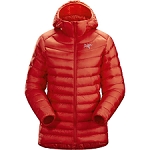
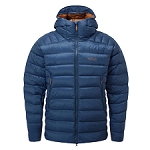

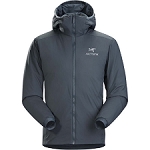
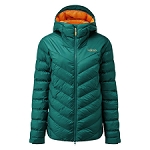








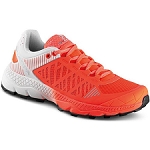
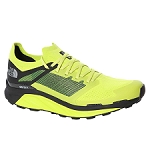




Leave a comment
Be the first to comment on this article.